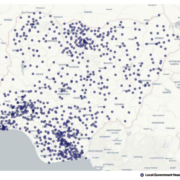By Caroline Jemeli
I have observed how my daughter makes payments, and it reflects a shift that is transforming the global economy. Millennials and Gen Z are redefining digital payments, driven by a desire for speed, accessibility and innovation. Their preferences are creating a “touch, scan, go” culture powered by tap-to-pay and scan-to-pay solutions. [All of these] are reshaping the way people think about money, access, and financial inclusion.
RELATED: Elevating digital payments for a cashless future in Africa
What was once a time-consuming process is now instant. A quick tap of a phone, smartwatch, or contactless card at the checkout counter, or a simple scan of a QR code, completes a transaction in seconds. No fumbling for cash, no waiting for change, just seamless, secure and frictionless payments. These tools embody the kind of instant gratification the youth have grown accustomed to in the digital age.
Gen Z particularly, are leading the charge, with data showing that 51% of them use digital payment methods like mobile wallets and only 10% rely on regular cash payments. For the youth, this ease of use is more than a convenience. It represents empowerment. By lowering the barriers to making and receiving payments, contactless technologies are opening economic participation, from side hustles and freelancing to small business entrepreneurship.
Building Sustainable Uptake
For digital payments to remain attractive and sustainable, the ecosystem must evolve alongside the youth’s needs. Governments and regulators must create frameworks that encourage investments and innovations in the sector. Payment service providers must innovate the way payments are accepted. Fintechs must push beyond current solutions to offer smarter, faster, and more inclusive options, and businesses must embrace these solutions to remain relevant.
That is why here at Network International (Network) we do not see payments as just transactions. For us, payments are experiences. We enable payments that suit your lifestyle, the way you live, whether you pay through card, mobile wallets or online.
Kenya illustrates both the progress and the gaps. Mobile money adoption is among the highest in the world, with up to 52% of Kenyans using mobile money daily. Data indicate that despite there being over Kenya, there are only about 48,000 POS machines in use. This undercuts the potential for inclusive, consistent payment acceptance.

Caroline Jemelis
Solutions such as the Network POS, QR code payments, mobile payments and even Soft POS technology by Network International address this gap by enabling merchants, from local vendors to SMEs and large enterprises, to accept payments across multiple channels: cards, mobile money, Apple Pay, Samsung Pay, and more. For consumers, it means confidence that, whether buying vegetables, a concert ticket, or paying for transport, their preferred payment option will be accepted.
For our younger demographic, it means they can make payments without the fear of being left out because a merchant does not accept a form of payment. It opens payments for merchants who do not have to lose business from a customer who has gone fully digital or from a foreigner who does not have local currency at hand.
For Early Adopters, the Future is Brighter
In digital payments, AI is increasingly playing a role in enhancing the payment experience. From powering fraud detection systems that learn and adapt to suspicious patterns in real time, to enabling personalised payment recommendations and seamless customer support through chatbots and biometric data screening, AI is making transactions safer, smarter, and more user-friendly.
It is also helping merchants optimise checkout processes and offering predictive insights into consumer spending habits, ensuring that the payment journey is not only secure but also tailored to the needs of today’s fast-paced, tech-savvy users.
Wearables: The Next Frontier
We are also seeing the rise of wearable technology being integrated to enable payments. Apple has enabled its customers to make payments with a simple tap using their Apple Watches on Apple Pay. The same applies to Google Wallets through smart watches. A newer trend is the use of payment rings to make contactless payments through near-field communication (NFC)-enabled rings. Because they are swift and contactless, their growth is projected to exhibit a compound annual growth rate of 19.3% between 2025 to 2032.
Network International is a partner for every business and customer who cares for bold, fast and convenient payment solutions because no matter who you are or where you are, payments should work.
What feels revolutionary today will soon be the everyday norm, provided businesses, regulators, and innovators continue to design with youth at the center. The younger generation is not just adopting new payment systems; it is rewriting the rules of commerce for everyone.
The writer is the Regional Head of Marketing, Merchant Services, Africa at Network International.





























